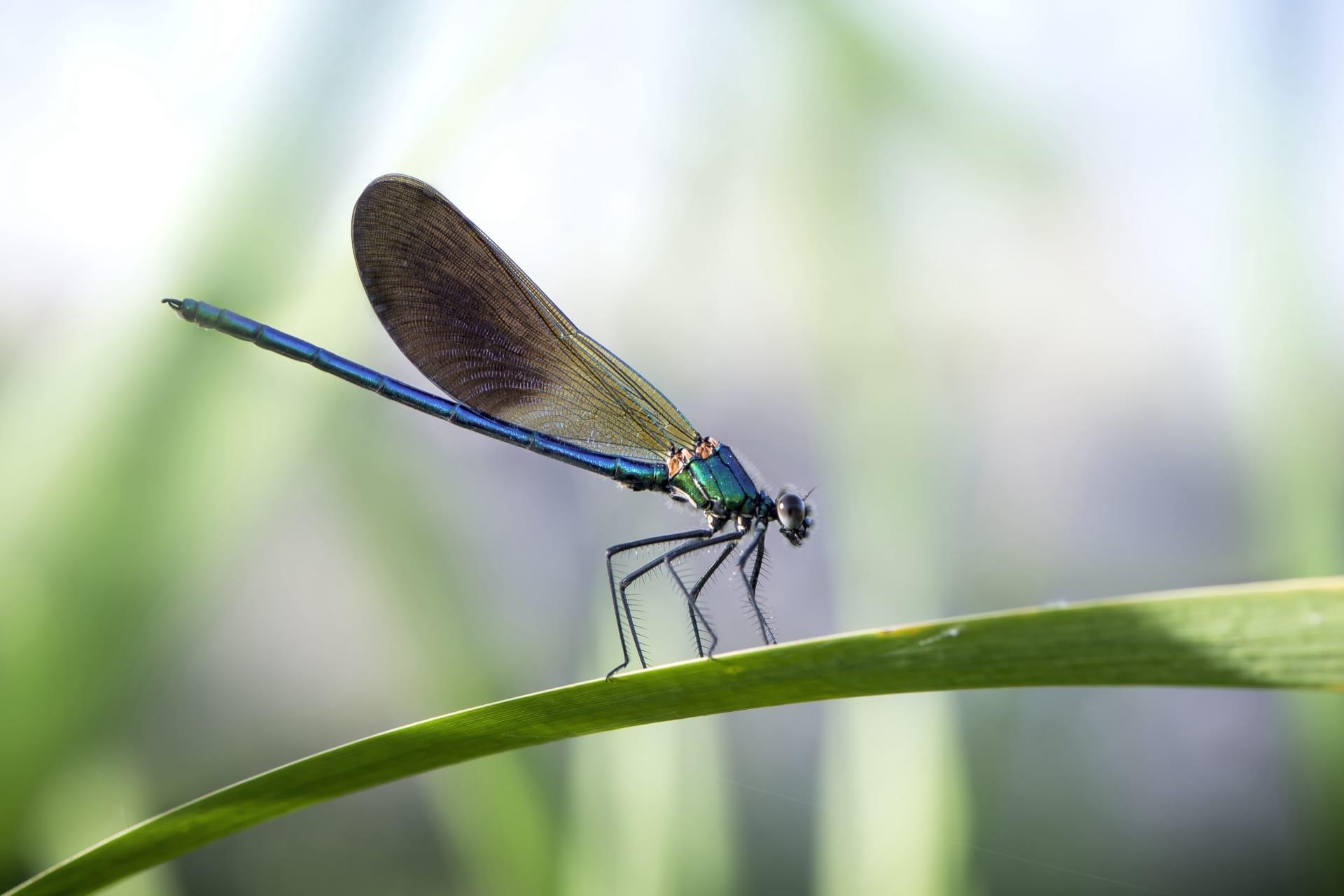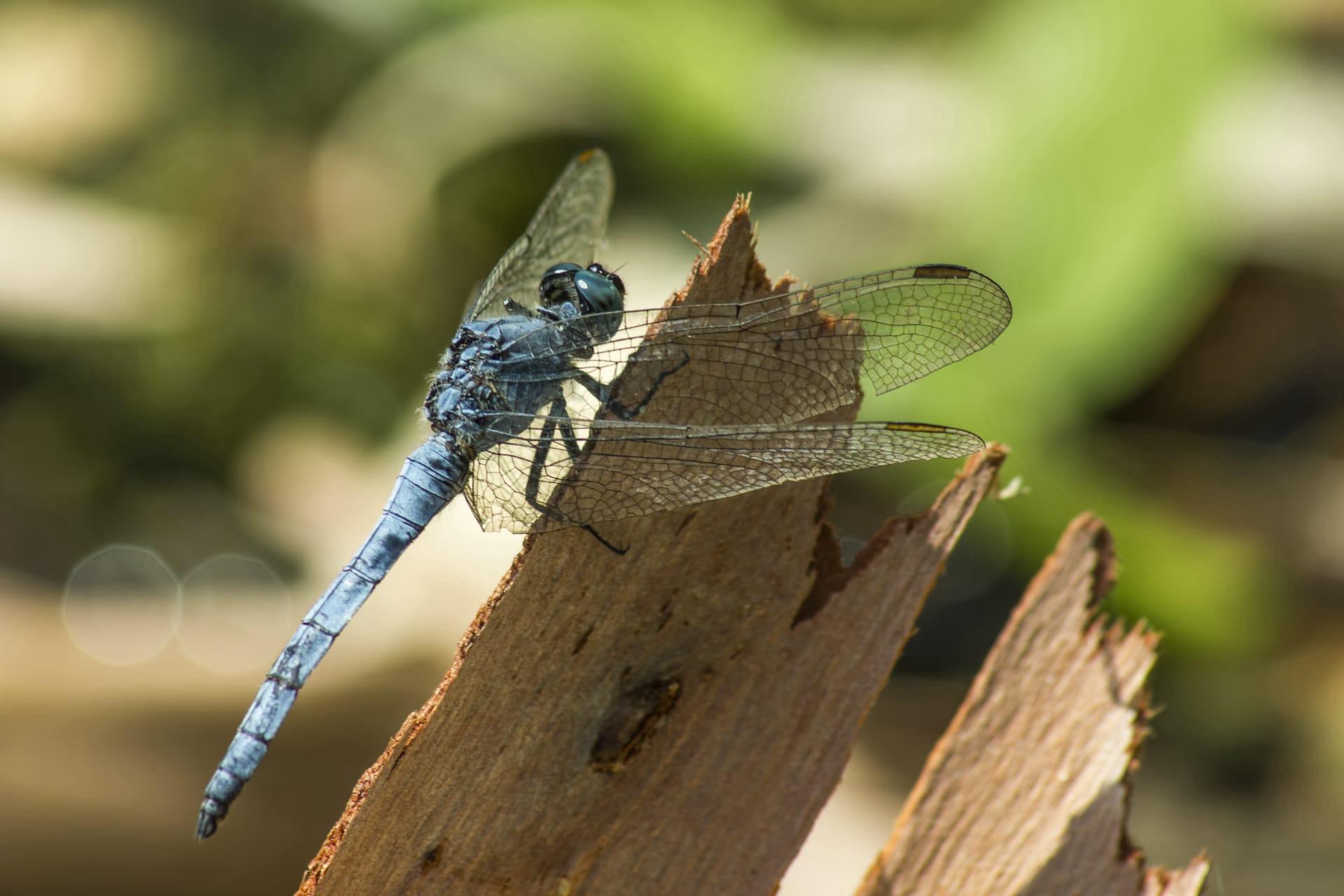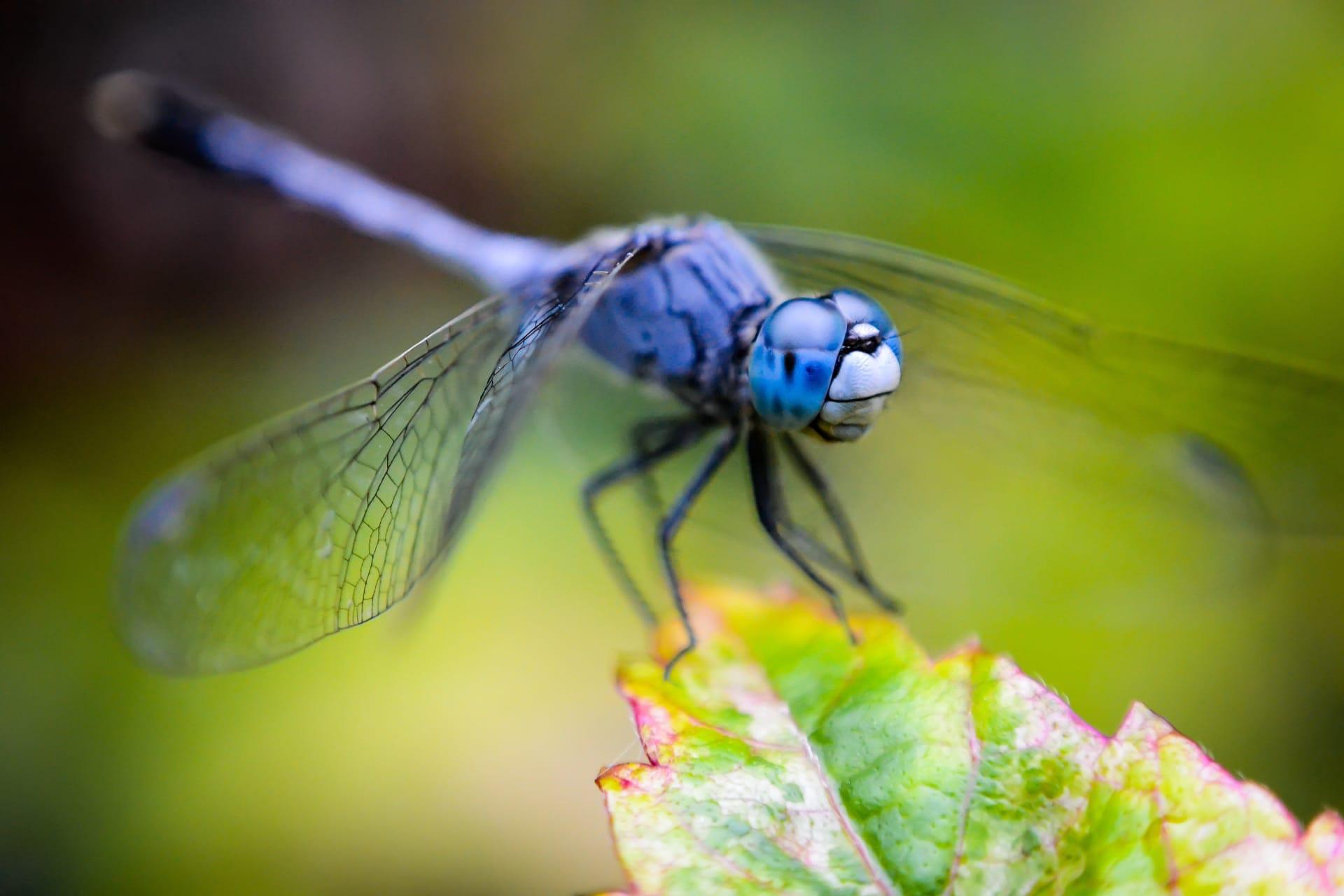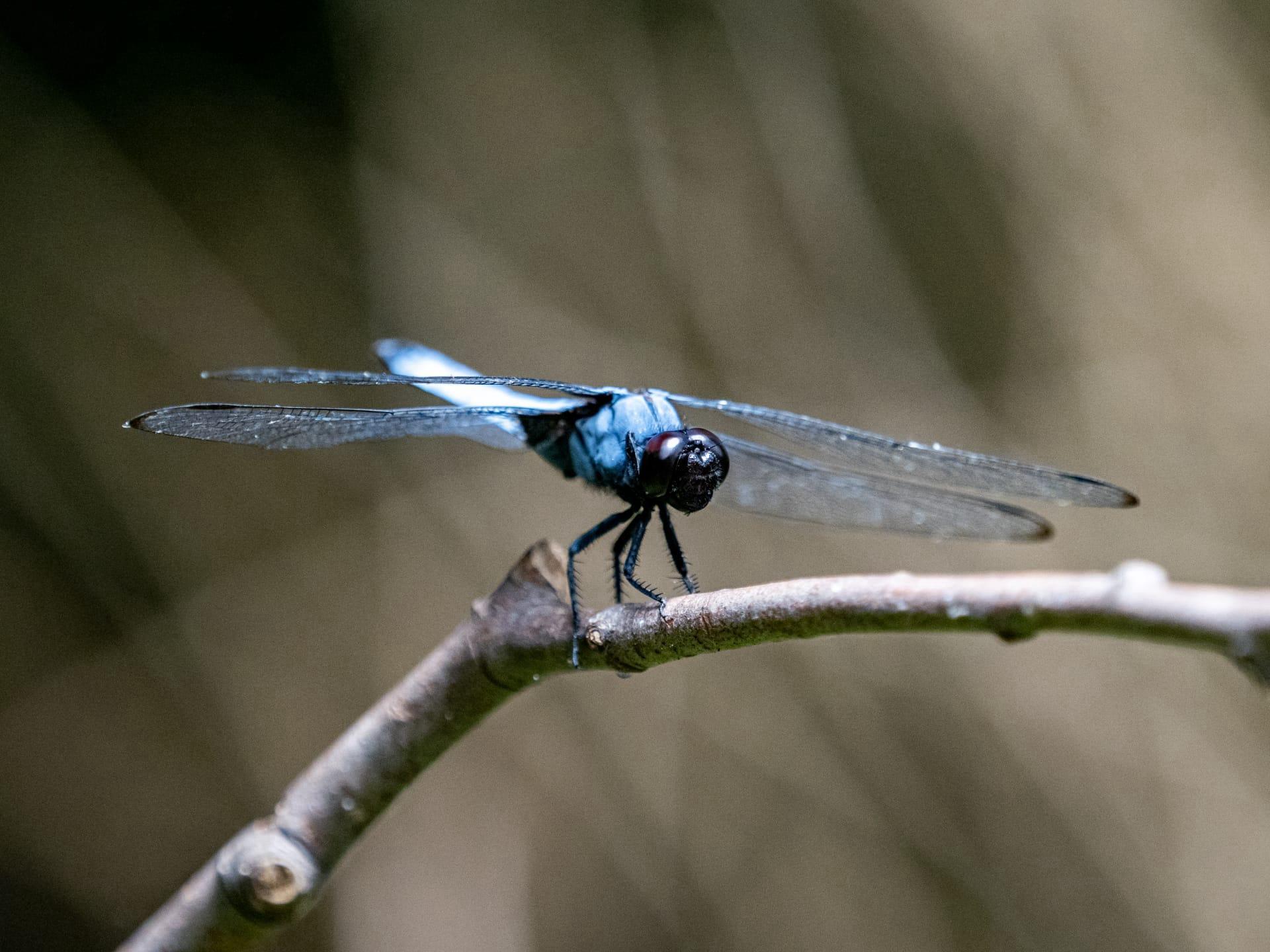Blue Dragonfly
- Home /
- Mini Encyclopedia /
- Animal /
- Blue Dragonfly
1
The blue dragonfly, scientifically known as the Anax imperator, belongs to the family Aeshnidae and is a striking example of the Odonata order. This species stands out with its robust body and predominantly blue coloration, mixed with greenish shades on the thorax and black stripes along the abdomen. The adult blue dragonfly can reach up to 3 inches (about 7.6 cm) in length, making it one of the larger dragonfly species.
Blue dragonflies are widely distributed across the globe, particularly thriving in temperate and tropical environments. They are commonly found near ponds, lakes, and wetlands, as these areas provide ideal breeding grounds. Their geographical range extends from Europe to North Africa, and across Asia to China and Japan. In North America, they are often seen in the eastern regions, from Canada down to Mexico, favoring warm and humid climates.

2
Question: Is it true that blue dragonflies can sting and are dangerous to humans?
Answer: Contrary to popular belief, blue dragonflies are harmless to humans. They do not possess a sting and are not aggressive. Their mouths are designed for catching small prey like insects, not for biting humans. While their swift flight and large size might intimidate some, they play a crucial role in controlling mosquito populations and are an indicator of a healthy ecosystem. Their presence is actually beneficial to humans.

3
The survival strategy of blue dragonflies is quite fascinating. They are skilled predators, using their exceptional flying abilities and acute vision to catch prey mid-air. Their eyes are nearly 360-degree spherical, allowing them to spot tiny insects from several feet away. They are also known for their speed, reaching up to 30 miles per hour (about 48 km/h), making them formidable hunters in the insect world.
Reproduction plays a key role in their survival. Females lay eggs in or near water bodies. The larvae, known as nymphs, live in water and undergo several molts before emerging as adults. This aquatic stage, which can last up to two years, is critical for their development. Nymphs are voracious predators too, feeding on small aquatic organisms, which contributes to their growth and eventual transition to adult dragonflies.

4
In the ecosystem, blue dragonflies play a pivotal role in both aquatic and terrestrial environments. As aquatic nymphs, they help control the population of other waterborne insects and organisms, maintaining a balance. Their presence in a water body is often an indicator of good water quality, as they thrive in clean, unpolluted environments.
As adults, they contribute significantly to controlling mosquito and fly populations, serving as natural pest control. This not only helps in reducing the spread of diseases like malaria but also supports biodiversity by maintaining a balanced food chain. Additionally, they are a food source for birds, fish, and other larger predators, thus integrating themselves into the larger ecological web.

5
Film: "Dragonfly Wings" is a documentary from the United States, released in 2019. It delves into the life cycle and ecology of dragonflies, with a special focus on the blue dragonfly. Stunning slow-motion sequences reveal their flight mechanics, while close-ups showcase their intricate behaviors in various habitats.
Book: "The World of Dragonflies" by Jonathan Alford, published in the UK in 2021, is a comprehensive guide. It includes a detailed chapter on the blue dragonfly, covering its anatomy, behavior, and role in different ecosystems. The book combines scientific information with vivid photography.
Book: "Dragonflies: Masters of the Air" by Anne Clarkson, released in the United States in 2020, focuses on the evolutionary history and adaptability of dragonflies. The blue dragonfly is featured for its remarkable adaptations and survival strategies, providing insights into the species' success across various environments.